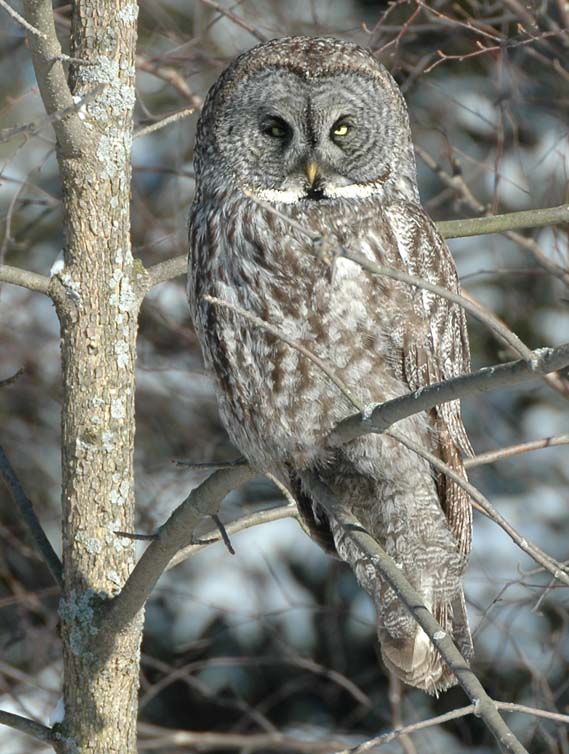Facts About Great grey owl
The great grey owl, also known as the great gray owl, holds the title of the world's largest owl by length. This majestic bird can be found across the Northern Hemisphere and is unique for being the only species in the genus Strix that inhabits both the Eastern and Western Hemispheres. Depending on the region, it is sometimes referred to as the Phantom of the North, cinereous owl, spectral owl, Lapland owl, spruce owl, bearded owl, or sooty owl.
Visually, the great grey owl is striking. It has a large, rounded head with a grey face, yellow eyes encircled by dark rings, and light underparts streaked with dark lines. Its upper parts are grey with pale bars, and it lacks the ear tufts seen in some other owl species. The owl's facial disc is particularly prominent, giving it a distinctive appearance. Its deep, rhythmic calls are primarily used for marking territory or communicating with its young.
Despite being the longest owl species, the great grey owl is not the heaviest. Its fluffy feathers and light body make it appear larger than it actually is. The wingspan can exceed 152 cm (about 5 feet), and the owl's length ranges from 61 to 84 cm (2 to 2.75 feet), with a weight between 580 to 1,900 grams (1.3 to 4.2 pounds).
Great grey owls thrive in dense coniferous forests in northern regions. They nest in various locations such as broken-topped trees, cavities, or even man-made platforms. During breeding season, they lay a clutch of up to four eggs and raise their young until they are capable of hunting on their own.
These owls are expert hunters, primarily targeting small rodents. They usually hunt at night, using their exceptional hearing to locate prey, even beneath layers of snow. The owl’s diet can vary depending on the available prey in its habitat.
However, the great grey owl faces several threats. Habitat loss from timber harvesting, exposure to rodenticides, collisions with vehicles, and diseases like West Nile Virus pose significant risks. Due to their size, they have few natural predators, with the Eurasian eagle-owl being one of the few that can prey on adult great grey owls.
Interestingly, despite their size, great grey owls are not very territorial and are less aggressive in defending their nesting areas or hunting grounds. This makes them somewhat elusive and harder to spot in the wild.
In captivity, there are relatively few great grey owls. A few can be found in wildlife centers and zoos, with the Eurasian subspecies being more common in European zoos.

 Chad
Chad